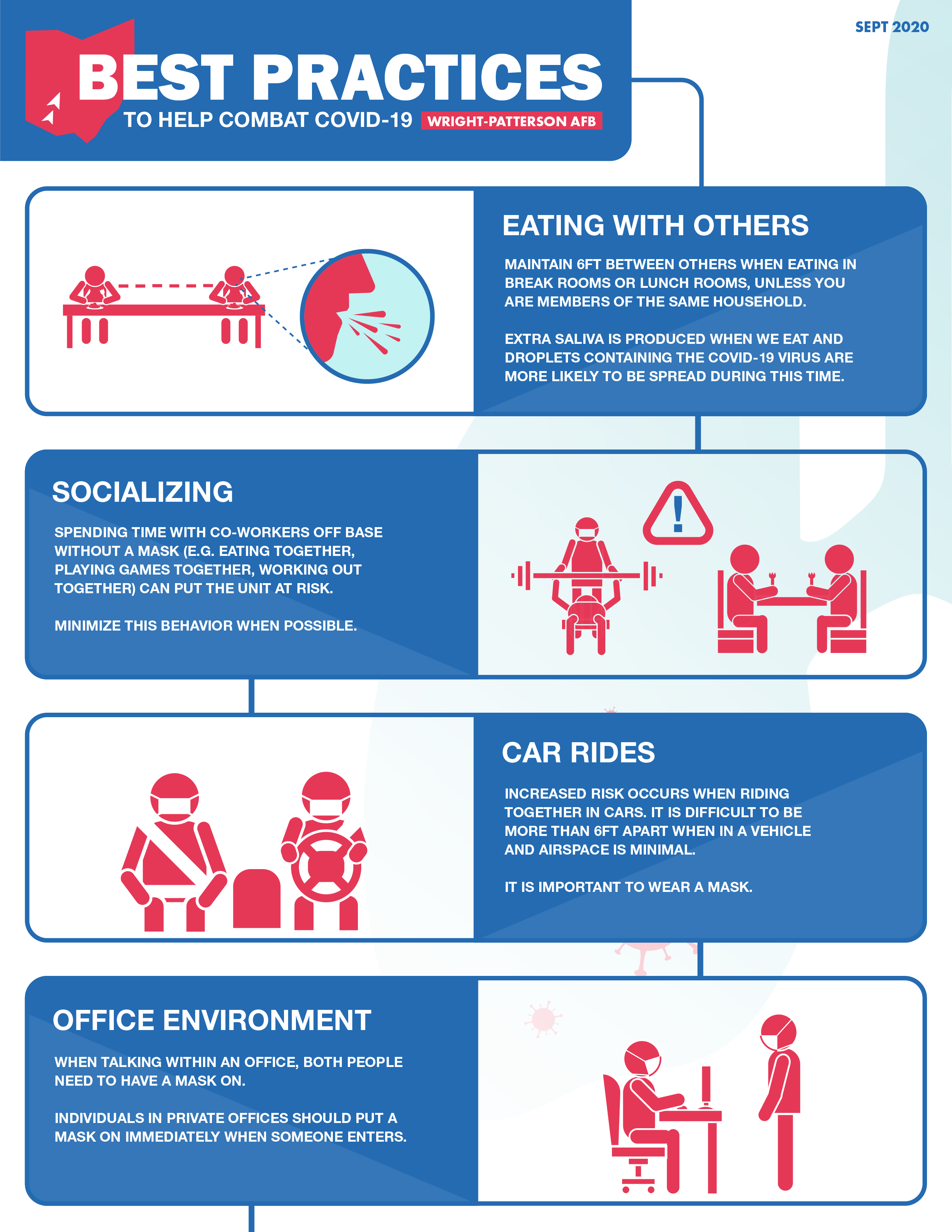Event Gathering Recommendations (as of March 3, 2021)
Most of the recommendations here are built off of CDC guidance but considerations are made for the state of Ohio (as per the Ohio Department of Health’s COVID-19 website) as well as our local surrounding counties and the transition to Health Protection Condition (HPCON) Bravo and Phase 2 on 21 September 2020. However, certain general principles should be considered when planning an event or gathering. Given the recent up and dwon surge in cases, this guidance may change frequently.
PHASE 1: No more than 10 personnel
PHASE 2 (recent change): No more than 50 personnel (updated guidance link)

Guiding Principles:
- The more people an individual interacts with at a gathering and the longer that interaction lasts, the higher the potential risk of becoming infected with COVID-19 and COVID-19 spreading
- The higher the level of community transmission in the area that the gathering is being held, the higher the risk of COVID-19 spreading during a gathering.
- The size of an event or gathering should be determined based on state, local, territorial or tribal safety laws and regulations.
- State of Ohio (last updated on 30 July 2020): limits mass gatherings to 10 people or less (inside and outside)
- Wright Patterson AFB (updated on 2 March 2020): limits mass gathering to 50 people or less (inside and outside)
- Although the recent transition to HPCON Bravo and Phase 2 is a step forward in maintaining the various WPAFB missions, appropriate facial covering and physical distancing must be utilized.
- Outside is better than the inside given the free air flow and circulation
- Masks must be worn at all times unless consuming food or beverages
The risk of COVID-19 spreading at events and gatherings increases as follows:
- Lowest risk: Virtual-only activities, events, and gatherings.
- More risk: Smaller outdoor and in-person gatherings in which individuals from different households remain spaced at least 6 feet apart, wear masks, do not share objects, and come from the same local area (e.g., community, town, city, or county).
- Higher risk: Medium-sized in-person gatherings that are adapted to allow individuals to remain spaced at least 6 feet apart and with attendees coming from outside the local area.
- Highest risk: Large in-person gatherings where it is difficult for individuals to remain spaced at least 6 feet apart and attendees travel from outside the local area.
Religious services are exempt from the 10 person limit but it is recommended that places of worship address:
- Space seating arrangements so there are 6 feet between personnel; small groups who live in the same household may sit closer than 6 feet apart.
- Consider limiting seating to alternate rows
- Post signage reminding people about social distancing to include mask use, 6 foot physical distancing, and hand washing
- In indoor and outdoor areas where people gather, provide floor markings at six-foot intervals to encourage social distancing.
- Clearly mark designated entry and exit points; if an auditorium/house of worship/building has only one entry/exit point, try to stagger entry and exit times if possible.
- Provide an option for virtual viewing (encourage use by immune compromised or high risk individuals).
- Continue remote working for staff as much as possible.
- Limit the use of frequently-touched objects such as trophies, worship aids, prayer books, hymnals, attendance registers, or other shared or passed items.
- Consider a stationary collection box, or mail or electronic methods of collecting financial contributions instead of shared or passed collection trays or baskets.
- Encourage avoidance of physical contact among attendees as permissible within the community’s tradition (avoid handshakes, high fives, hug, etc.)